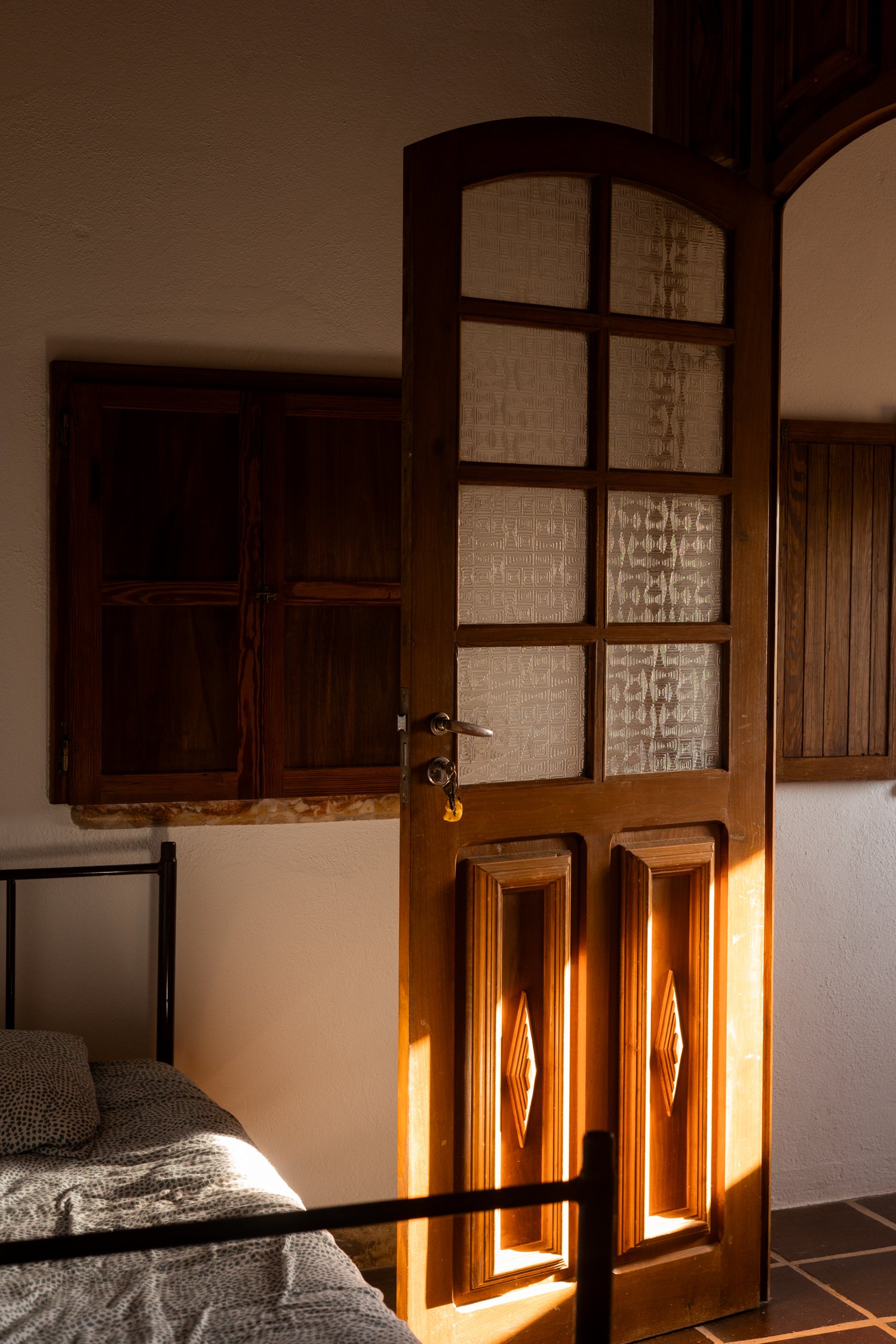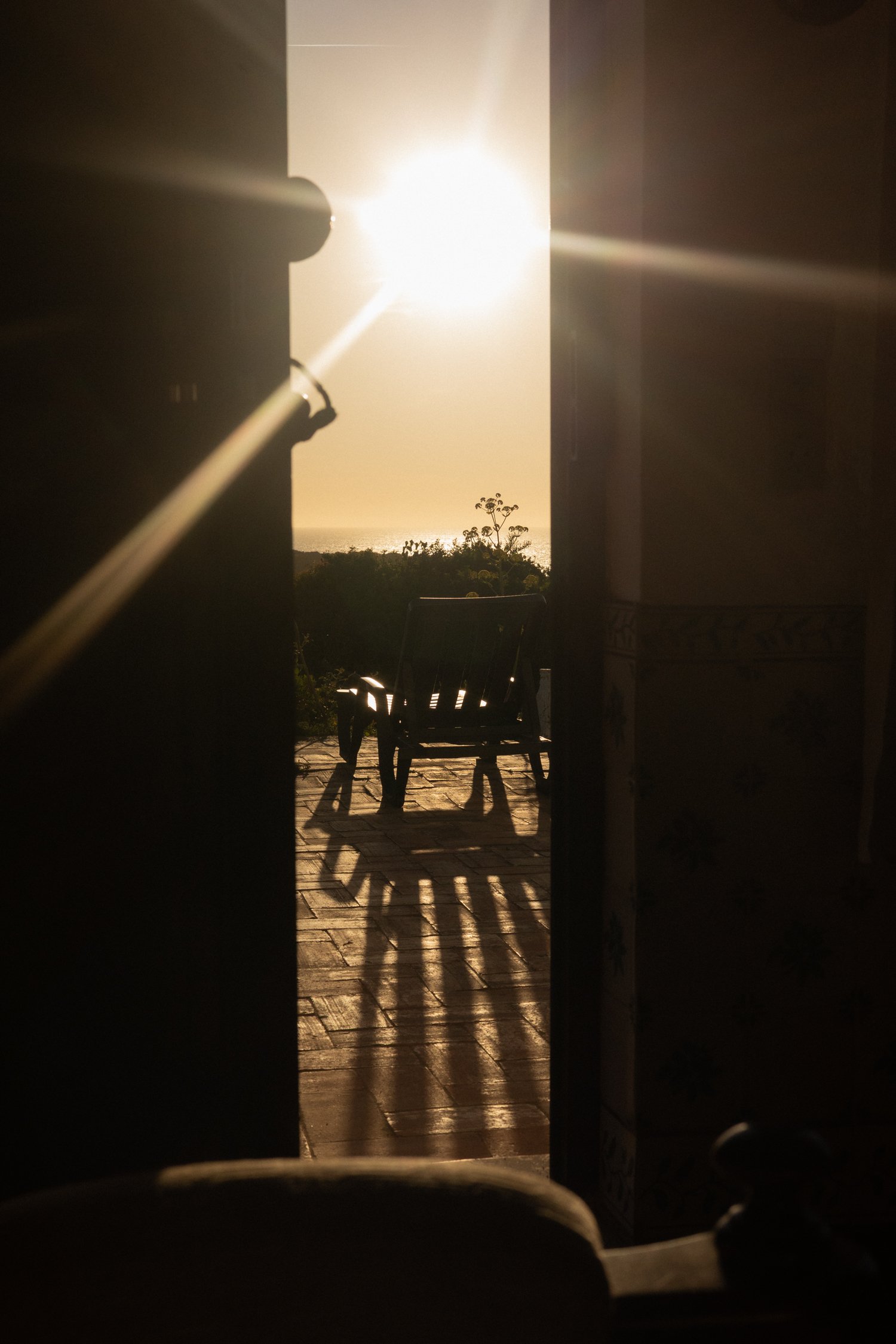Aljezur Airbnb in Algarve: A Unique House with Sunset Views for a Slow Travel Escape
Not us. As much as we appreciate a well-run independent boutique stay, there’s something about renting an Airbnb or a local house—another way to get under the skin of a place, to live by its rhythm rather than just passing through. Some destinations call for that kind of stay, and Aljezur is one of them.
Tucked away on Portugal’s southwest coast, this small town is a world apart from the glossy Algarve most people know. No high-rise resorts, no manicured promenades—just a place shaped by the elements. Rugged cliffs, golden beaches that stretch on forever, a landscape carved by Atlantic winds. It’s a destination that still belongs to those who seek it out, the kind of place where days revolve around the tides, where surfers chase waves and locals sell honey and homemade cheese from roadside stalls. It’s raw, understated, and impossible to rush through.
We hadn’t planned to stop here, but after coming across photos of this house, skipping it wasn’t an option. And thank god we didn’t—because it didn’t just live up to expectations, it surpassed them.
Casa do Vale dos Homenshe: The Airbnb That Defines Slow Travel
Travel is often a sprint, an exhausting checklist of things to tick off. And yet, the more we travel, the slower we go. Because the truth is, it’s never about seeing everything—it’s about feeling something different. A new culture, a shift in pace, a different way of existing. We’d love to know it all, see it all, but that’s never going to happen. So we take what we can and make it count.
Sometimes, that means booking a small city apartment. Other times, it means finding a house like this—one that redefines slow travel. A place in Aljezur, just steps from the beach, where the sun sets right in front of you, uninterrupted. Raw, real, the kind of spot that sticks with you long after you leave. If you’re planning a road trip through the Algarve, this isn’t a stop to hesitate on. And if you’re coming down from Lisbon, it’s barely a detour—let’s be honest, if you’re chasing cliffs and the most stunning beaches, you’re already heading southwest.
What to Expect
A house that stands almost alone in an open field, framed by rugged nature and endless skies. No fences, no neat garden paths—just wild grasses swaying in the breeze, a scattering of sun-bleached rocks, and a dirt track that leads you to the front door. It’s the kind of place that feels cinematic, as if you’ve stepped into a carefully composed scene where the elements dictate the mood.
Inside, there’s a raw simplicity that instantly puts you at ease. Worn wooden beams, whitewashed walls, and windows thrown open to the Atlantic air. A fireplace sits at the heart of the living space, ready for cool nights when the wind howls through the cliffs. The furniture is a mix of old and repurposed, pieces that feel as if they’ve been collected over time rather than carefully curated. Nothing feels too new, too polished, or too perfect—it just fits.
Step outside, and the landscape stretches wide and uninterrupted. Animals wander lazily in the backyard, occasionally stopping to stare as if they, too, are caught in the slow rhythm of this place. Sunsets arrive with a quiet grandeur, the sky shifting through shades of pink, orange, and deep blue as the last light disappears into the sea. And then, the silence—deep, enveloping, the kind that makes you realise how much noise you’ve left behind.
It’s the kind of house where you wake up with the first light, drawn outside by the salty air and the sound of distant waves. Where mornings are unhurried, best spent barefoot on the terrace with a cup of coffee, watching the mist rise over the hills. Where evenings stretch long into the night, a bottle of wine on the table, the scent of grilled fish lingering in the air, and conversations meandering with no need to be anywhere else.
This is what slow travel should feel like—stripped back, grounding, just the right amount of out-of-the-way.
The Kitchen
This is where everything happened. A space that doesn’t try to impress but somehow does anyway. An old gas stove, slightly uneven, but reliable. A kitchen that feels lived in—not curated for aesthetics, but shaped by years of real use. Open shelves stacked with mismatched plates, a collection of wooden spoons worn smooth from time, and a heavy cast-iron pan that’s seen more meals than you could count. The kind of place where things are thrown together instinctively, where recipes don’t matter as much as what feels right in the moment.
Mornings began at the market, baskets filled with whatever was freshest—plump tomatoes, fragrant herbs, still-warm bread from a baker who doesn’t bother with signs. Evenings unfolded in the garden, an open fire glowing as fish charred over the flames, the scent of citrus and olive oil mixing with the salty breeze. Conversations stretched long, unhurried, as plates passed from hand to hand, wine glasses refilled with no thought of the time.
It’s a kitchen that makes cooking feel effortless, not because of fancy gadgets or pristine countertops, but because it’s designed for the kind of meals that don’t need overthinking. A few scattered tiles, vintage furniture that’s been around longer than you have, and a wooden table scratched and marked from years of shared dinners.
A space that isn’t about perfection, but about presence.





































































